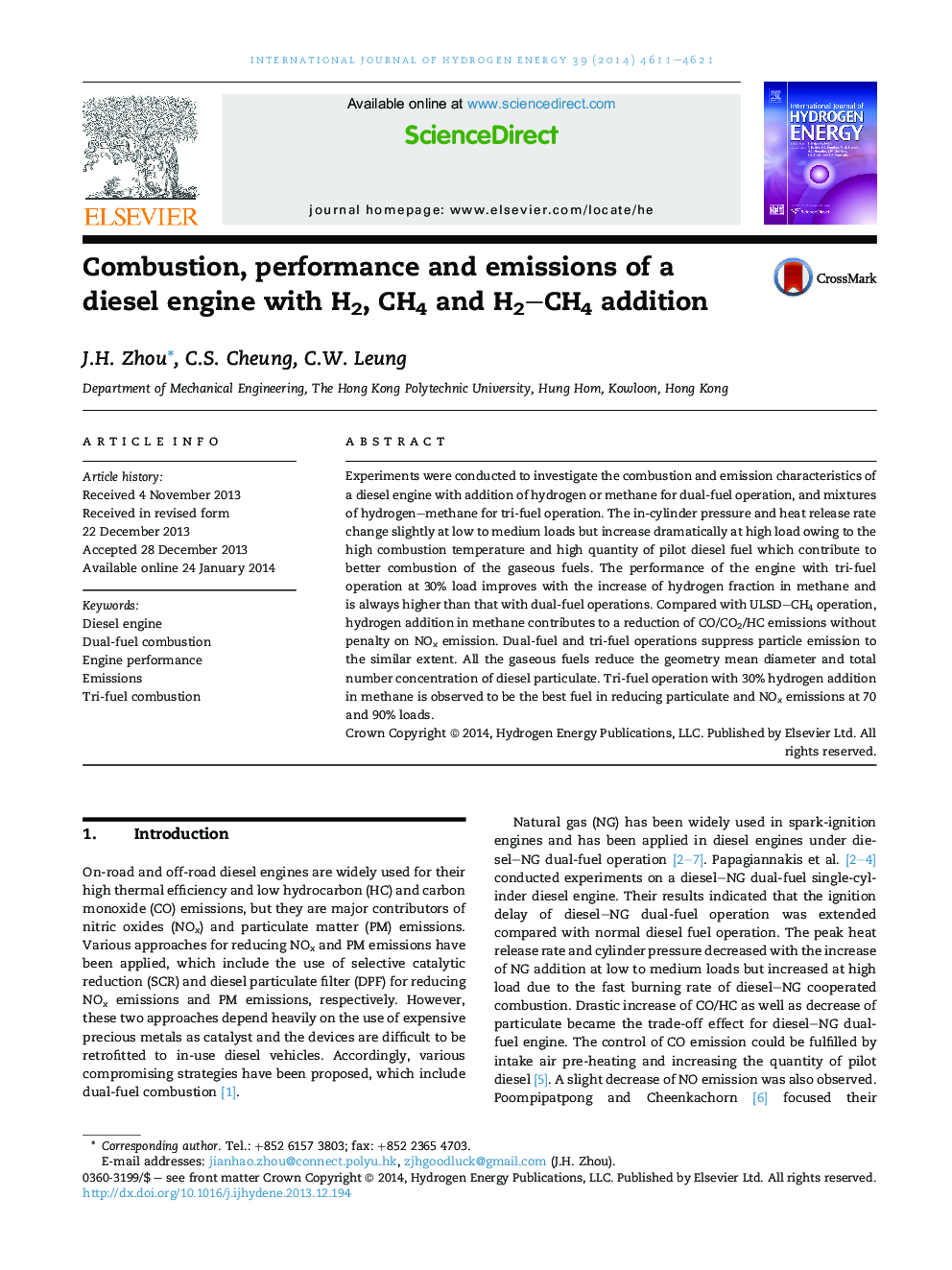| Article ID | Journal | Published Year | Pages | File Type |
|---|---|---|---|---|
| 1270550 | International Journal of Hydrogen Energy | 2014 | 11 Pages |
•This is a novel study on a dual-fuel engine fueled with ULSD and H2–CH4 mixture.•H2 addition improves the performance of a ULSD–CH4 dual-fuel engine at low load.•CH4 addition smoothes the combustion of ULSD–H2 dual-fuel engine at high load.•CH4 addition reduces the NOx emission of ULSD–H2 dual-fuel engine at high load.•CH4, H2 and H2–CH4 addition reduces the diesel particle number and size.
Experiments were conducted to investigate the combustion and emission characteristics of a diesel engine with addition of hydrogen or methane for dual-fuel operation, and mixtures of hydrogen–methane for tri-fuel operation. The in-cylinder pressure and heat release rate change slightly at low to medium loads but increase dramatically at high load owing to the high combustion temperature and high quantity of pilot diesel fuel which contribute to better combustion of the gaseous fuels. The performance of the engine with tri-fuel operation at 30% load improves with the increase of hydrogen fraction in methane and is always higher than that with dual-fuel operations. Compared with ULSD–CH4 operation, hydrogen addition in methane contributes to a reduction of CO/CO2/HC emissions without penalty on NOx emission. Dual-fuel and tri-fuel operations suppress particle emission to the similar extent. All the gaseous fuels reduce the geometry mean diameter and total number concentration of diesel particulate. Tri-fuel operation with 30% hydrogen addition in methane is observed to be the best fuel in reducing particulate and NOx emissions at 70 and 90% loads.
